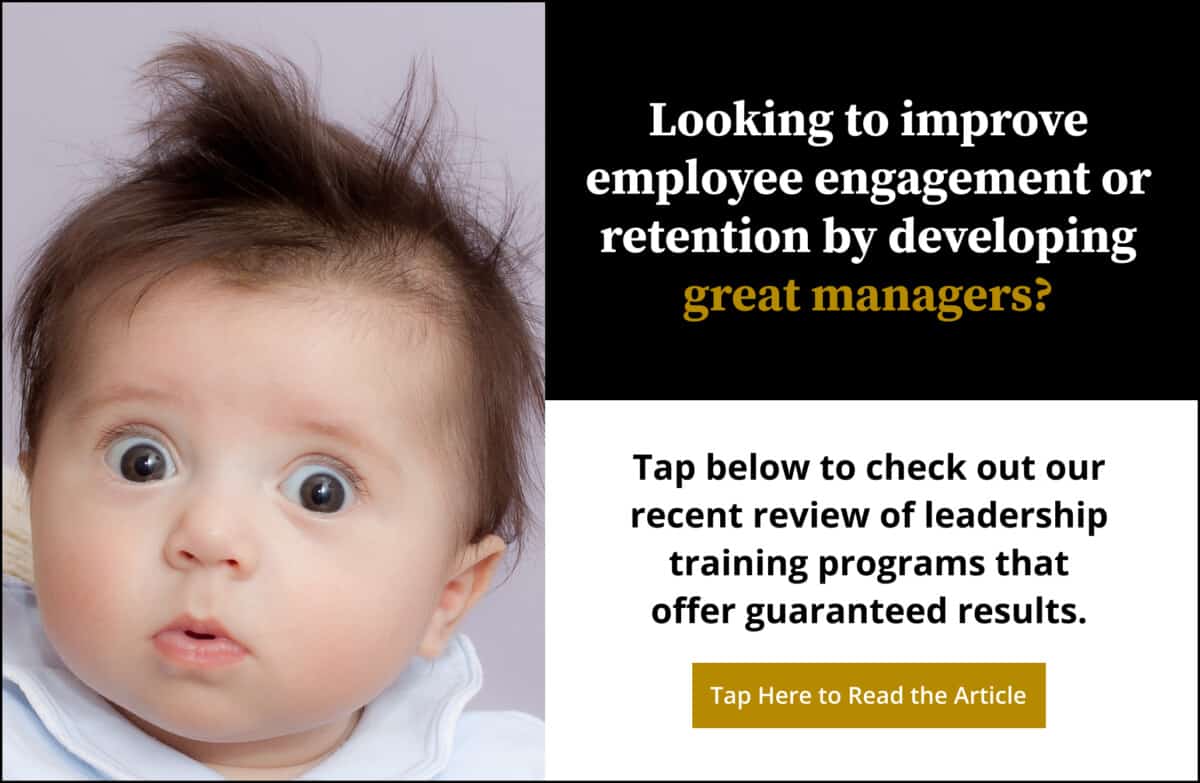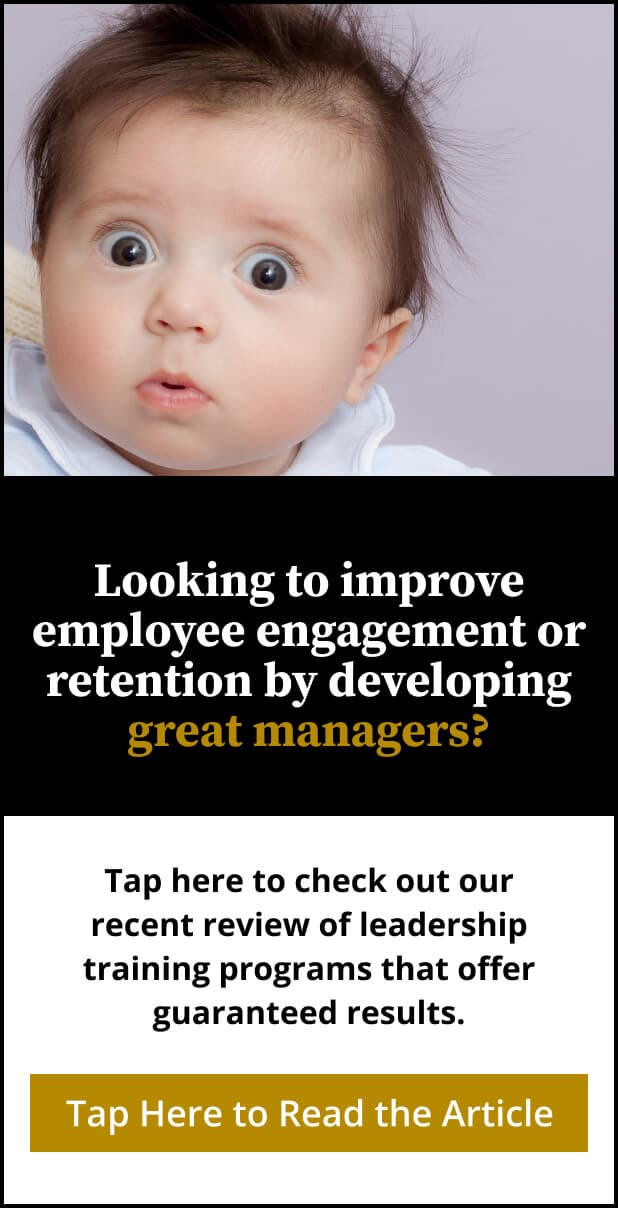Share:

You’ve probably seen the term “organizational culture” in books and articles about leadership and management many times over the last few decades.
How much does culture actually impact the success of an organization?
Organizational culture is important because it is the primary factor for determining how well an organization executes on every other aspect of organizational performance. Culture may also be the most important competitive advantage because it is the hardest to copy.
Some of the obstacles on the path of success for many companies include high turnover rates, little to no innovation, no employee buy-in, employee disengagement, customer dissatisfaction, poor decision-making, and lack of transparency and accountability.
These obstacles can be overcome by fostering a healthy organizational culture that makes caring a part of the business model.
Here are 10 reasons great leaders make culture a priority in their organizations.


1. Culture May Be the Most Important Competitive Advantage
What gives a company that’s offering a common product or service a competitive edge? What makes them stand out from the competition and become a leader in their field? Culture.
A strong organizational culture provides endless benefits for companies.
Whether it’s recruiting top talent, keeping employees engaged, building and raising brand awareness, or inspiring an environment where innovation is the norm, organizational culture drives success.
There is mounting evidence that suggests culture is a major part of job seekers’ expectations for potential places of employment. Even through the pandemic, with many people working from home, this has not changed.
The 2021 Job Seeker Nation Report indicates that, despite the increase in remote work over the course of the pandemic, company culture has remained very important for employees.
According to the Report, 86% of job seekers say culture is a “somewhat or very important” factor, with 48% rating it as “very important”(up from 37% in 2019), in their job search.
2. Culture Takes A Long Time To Copy
Leaders often do not realize that it can take years to copy organizational culture. A company that attempts to copy the culture of successful organizations will not see the benefits that an authentic culture produces.
As Torben Rick points out, “The most important thing about organizational culture is that it’s the only sustainable point of difference for any organization. Anyone can copy a strategy, but nobody can copy a culture.”
While many leadership practices, strategies, and organizational processes are easy to copy, organizational culture is not. It is part of a company’s DNA (in that each company’s culture is unique).
If a leader isn’t truly invested in their employees, the culture won’t develop and evolve organically. If the culture isn’t reinforced within the organization through daily practice, an organization will not realize its vision.
It may not even survive long enough to realize the huge mistake it has made, which is: you can’t fake an organizational culture that values employees.
A company’s mission, vision, and values are essential for success, and its ability to make them a real part of its culture significantly impacts every level of the organization
3. Culture is More than a Series of Buzzwords
Many organizations will codify their culture on their websites, dedicate chapters to it in their employee handbooks, and reiterate their cultural tenets at every team meeting.
Maybe you’ve even worked for a company that incorporated “mission, vision, and values” posters into their office break room décor.
It isn’t difficult to come up with a clever mission statement, but it can be a challenge to unite employees in a team effort to achieve that mission.
You’ll hear the same buzzwords come up time and again in discussions about culture and even in the language some organizations use to describe their own individual cultures.
“Servant Leadership,” in particular, is a term that has gained popularity in the last few years.
You’ll also often hear the phrase “cultural fit,” and it is now a normal part of the recruitment process for many recruiters to hold initial cultural fit interviews with candidates before moving on to any informative discussion about the jobs they are trying to fill.
Determining cultural fit in the recruitment process is crucial because of the financial costs associated with making poor hiring choices.
When dealing with recruitment and determining what qualities they are seeking in a candidate, leaders should always ask themselves, even if they’ve already done it a million times, “How well are we doing organizational culture?”
The answer to this question may be difficult for some leaders to face. It leads to other questions about authenticity, foresight, and follow-through.
4. Culture Determines the Ability to Execute on Strategy
Visionary leadership is vital to the survival of any company.
For a company to achieve its vision through both long- and short-term goals, it needs a strong strategy with talented, high-performing team members in place to meet these goals.
However, if a team is not united with a shared sense of purpose, even the best strategy will fail.
A good organizational culture emphasizes the value of employees and acknowledges the important role employees play in the implementation and execution of strategies.
A workplace environment won’t be healthy when there is no trust, no transparency, no accountability and where burnout and anxiety are the norm.
High-performance teams are adept at executing on strategy. Organizational culture is how you put together a high-performance team.
Every company culture should provide its team with what it needs to perform at its best.
As Daniel Pink explains in his book, Drive: The Surprising Truth About What Motivates Us, an organization must meet three basic needs of employees—autonomy, mastery, and purpose—to motivate them to perform at a high level.
Leaders who foster healthy organizational cultures, both in word and practice, will provide employees with the motivational tools they need to succeed as individuals and a team.
5. Culture Attracts and Retains Talent
Recruitment is a highly-competitive area where organizational culture can determine whether your organization has the assets needed to attract top talent.
There are studies that suggest a link between the public perceptions of organizational culture and corporate branding as measured by a company’s reputation.
What does this mean for recruiting efforts?
If your company’s culture is viewed positively outside the organization, talented candidates will take notice and want to work for you. So, to recruit the best people, leaders will clearly communicate their organization’s culture through branding.
Companies must differentiate themselves from competitors in order to gain the competitive edge in recruitment. An organizational culture that is known for putting employees first gives them the competitive edge.
According to Hubilo CEO and Founder Vaibhav Jain, when candidates who are drawn to the company’s positive culture are hired, they reinforce the culture and attract employees with the same values and vision.
If you’ve built organizational culture into your company’s reputation and brand, talented candidates will want to join your team. They will already know what your company is about before the first interview has even been scheduled.
Increasingly, employees are seeking work-life balance and want to work for organizations that have cultures that are aligned with their own personal and professional values.
This trend has put culture at the center of recruitment efforts.
Improving recruitment, retention, and engagement can also help companies remain stable in times of change, prevent employee burnout, and make organizations more resilient and less vulnerable to potential loss of revenue and other resources.
Additionally, a strong organizational culture that has buy-in from employees can guide leaders in establishing a sound succession plan for the future of the organization.
6. Culture Boosts Employee Engagement
Employee engagement, or the lack thereof, has been a growing problem over the last few decades.
Even worse than an unengaged employee is the actively disengaged employee. Actively disengaged employees can chip away at a company’s productivity, threaten its financial stability, and create a toxic work environment for other employees.
A culture focused on caring, building trust, and empowering employees, while also offering them the autonomy they need to excel, will yield amazing results for companies.
Autonomy is actually one of the most important things a caring leader can provide for their employees.
Based on the findings of a University of Birmingham study, there is a correlation between employee autonomy and increased job satisfaction and overall well-being.
One caveat for leaders: you always want to avoid a quid pro quo situation. Employees’ value should not be contingent upon what they are giving back to the company.
For example, whatever cultural perks you offer employees should not be tied to how much revenue an employee generates for the company. An employee should not feel that they are required to work 70-hour work weeks in order to be considered a valued member of the team.


7. Culture Improves Customer Service (Internally and Externally)
There’s an inextricable link between employee engagement and customer satisfaction.
If your employees aren’t satisfied, your clients won’t be either. If your employees don’t trust you and share your vision, your customers won’t either.
A healthy culture that fosters open, honest, respectful communication internally and externally will help employees maintain strong relationships with customers.
It will also create an environment where exceptional customer service is the norm and customer-focused innovation flourishes.
According to Skip Prichard, President & CEO of OCLC, “Customer-focused innovation thrives when a progressive attitude is supported by processes and systems to harvest employee ideas and bring them to fruition.”
8. Culture Fosters Innovation
Organizational culture impacts innovation in a number of ways, as we outlined in great detail in this article on how culture drives innovation.
At a high level, in a culture where fear of failure is present, innovation will not happen.
However, in a culture where fear is absent and trust is high, innovation happens much more easily.
In any organization that does not have a strong organizational culture, innovation suffers.
This is why it is so important for employees to be allowed and encouraged to actively contribute to the creative process that sets the stage for continuous innovation.
When upper management is open to a variety of perspectives and encourages employees at all levels of the organization to contribute to the creative process, it demonstrates to the employees that they are valued.
The sharing of ideas and suggestions, even when they may be critical or challenge the status quo, is necessary to drive innovation. Having a culture of innovation fuels creativity and can lead to better-informed decision-making for upper management.
9. Culture Assures Quality
A company can have a great organizational culture on paper, but if it isn’t practiced on a day-to-day basis, it’s useless.
Companies have often spent a tremendous amount of time and effort enshrining their cultures, often using a lot of the same language successful companies use.
However, they do not reap the same rewards as companies that truly make culture a part of the organization’s infrastructure.
The quality of the services and products a company offers its customers, as well as the quality of work they get from their employees, suffers when the company’s culture “language” is not translated into actions.
A study published in Management and Economics Journal found that organizational culture can influence organizational performance and quality assurance.
An organizational culture that equips employees with the tools they need to succeed, gives them a platform for their own ideas, provides them with the autonomy they need to achieve their greatest potential, and makes them feel fully invested in the success of each project (and the overall success of the company), will produce quality services that benefit their clients and their communities.
10. Culture Creates an Impact
A company that gains the competitive edge organizational culture provides will maximize its impact on its clients and the community it serves. This is directly tied to branding and reputation building, two things leaders should never underestimate.
Organizations like Southwest Airlines and The Container Store started with strong, employee-first organizational cultures, and it wasn’t just talk. These companies truly value their employees, and their organizational cultures have yielded great financial success.
Companies that make giving part of their culture can make an even greater impact beyond their organization by encouraging employees to give back and providing flexible schedules that allow them to do so.
Also, when leaders build and sustain a company culture that helps team members to thrive, the work of the leaders becomes much more meaningful.
Instead of coming to work to just “hit the numbers,” leaders come to work to help develop amazing human beings who are thriving and making the world a better place simply by being in it.
Culture in Your Organization
Healthy organizational cultures establish a mutually beneficial relationship between leaders and teams and create a positive environment where everyone thrives.
If you can’t honestly say that you, as a leader, are having a positive impact on people’s lives and consistently putting employees first, maybe it’s time to revisit and re-think how your organization does culture, and how a great company culture can impact the success of your organization.

Matt Tenney has been working to help organizations develop leaders who improve employee engagement and performance since 2012. He is the author of three leadership books, including the groundbreaking, highly acclaimed book Inspire Greatness: How to Motivate Employees with a Simple, Repeatable, Scalable Process.
Matt’s ideas have been featured in major media outlets and his clients include numerous national associations and Fortune 500 companies.
He is often invited to deliver keynote speeches at conferences and leadership meetings, and is known for delivering valuable, actionable insights in a way that is memorable and deeply inspiring.


